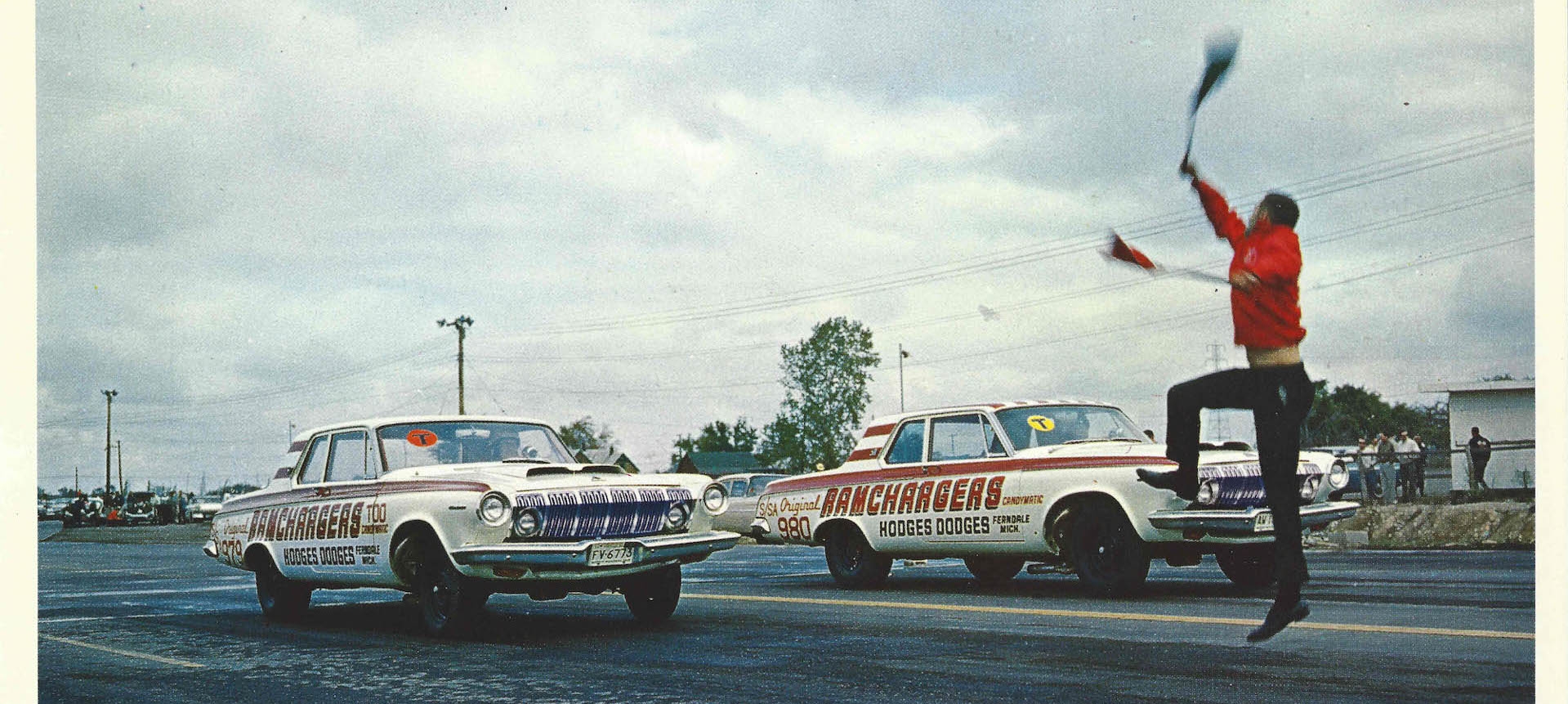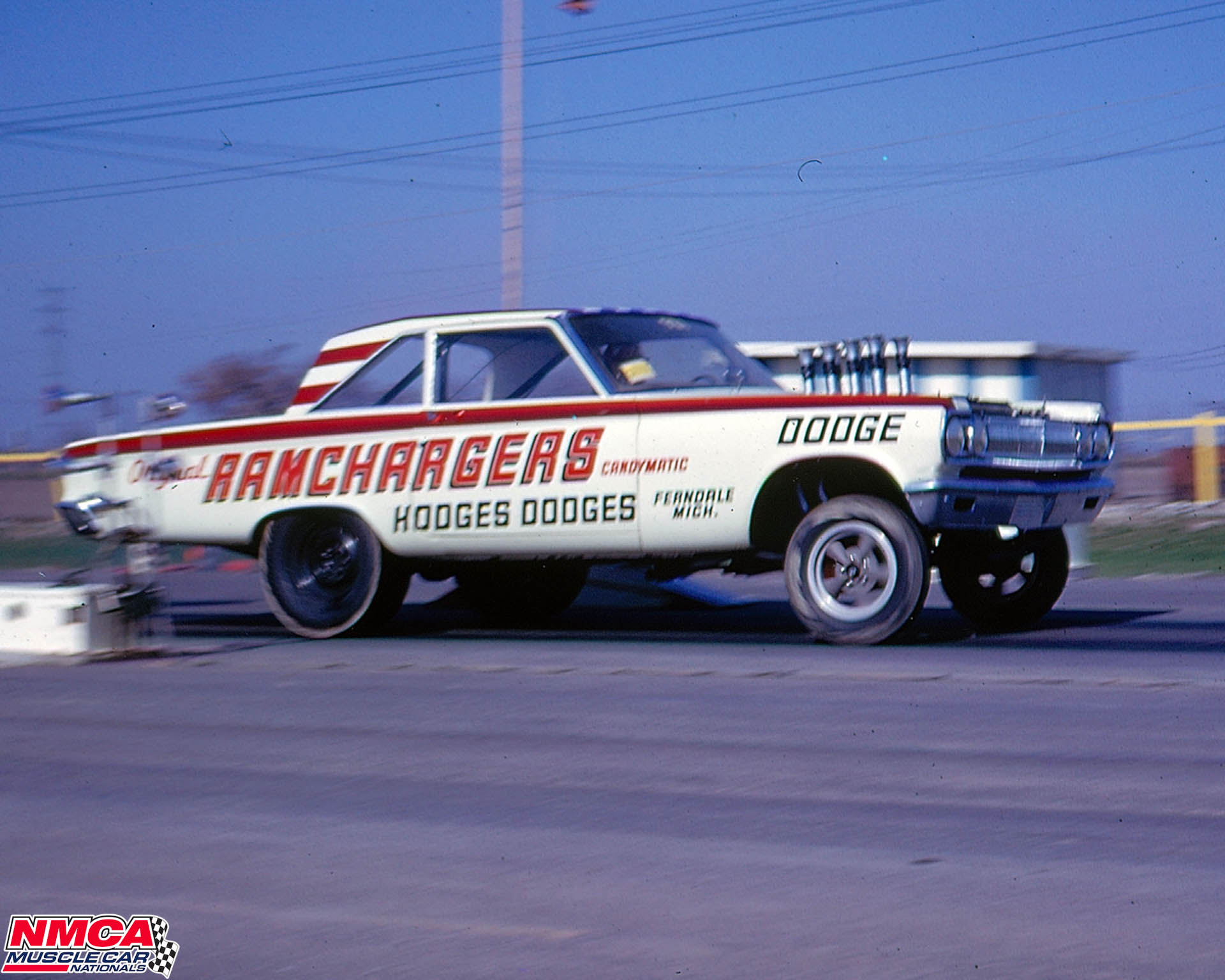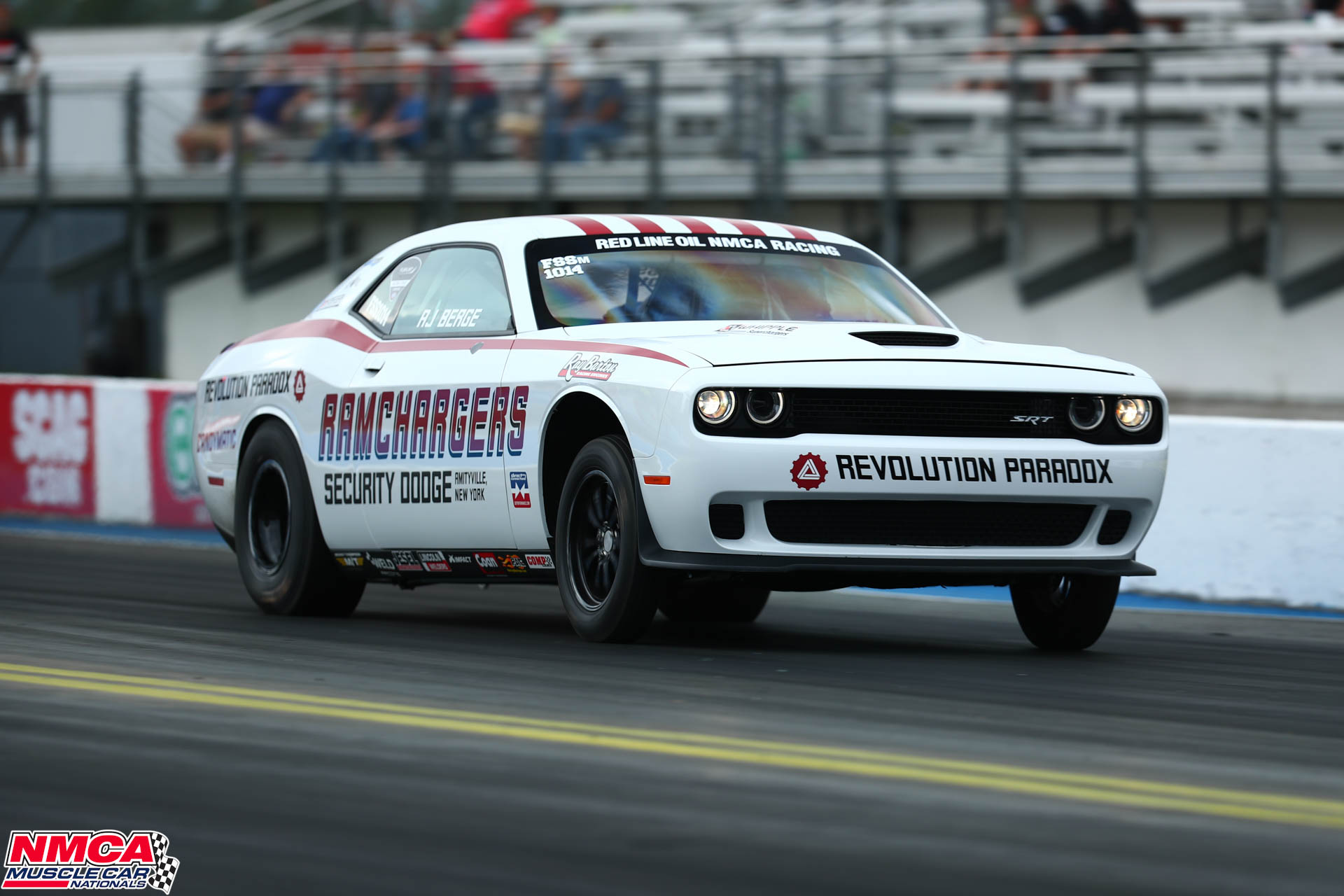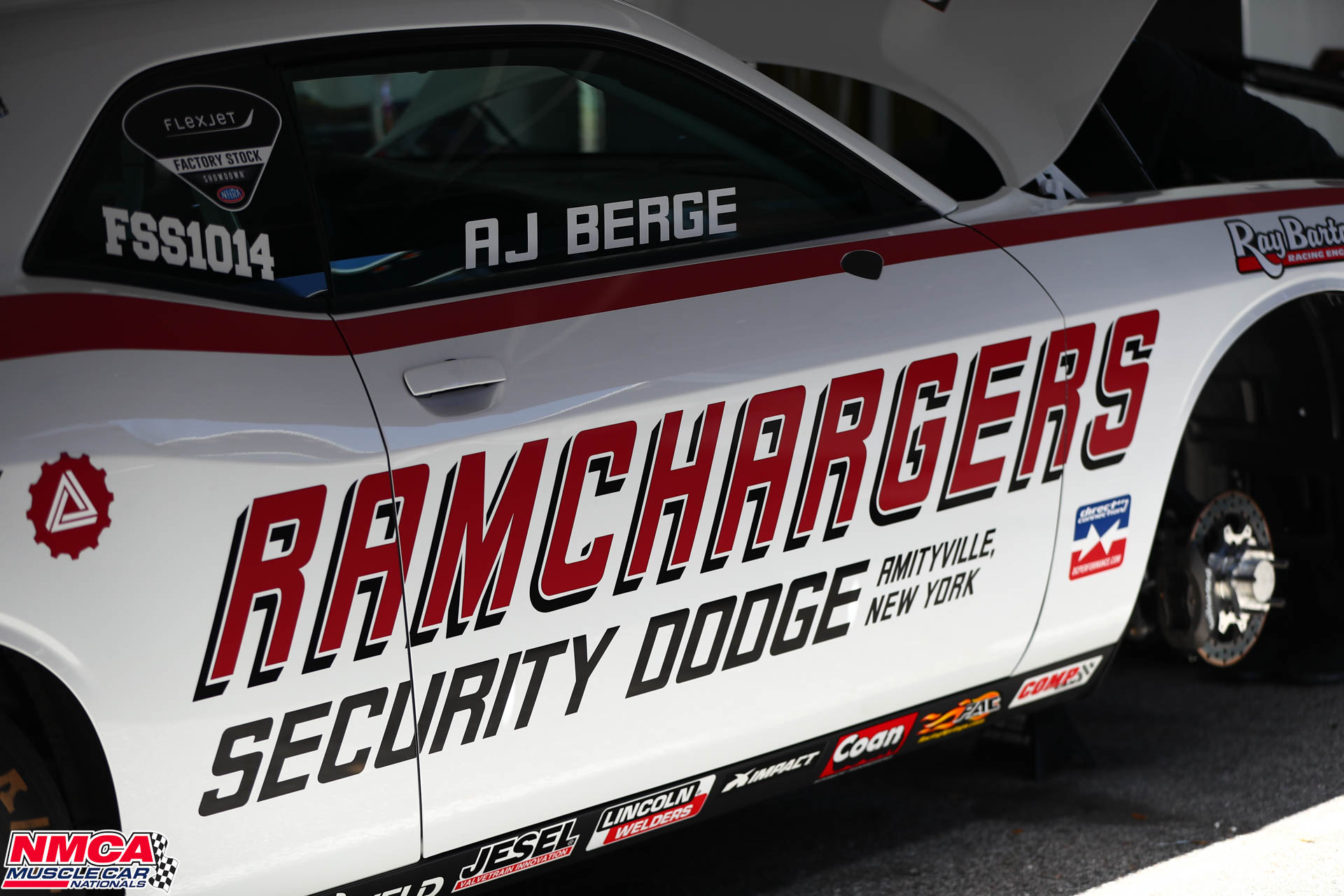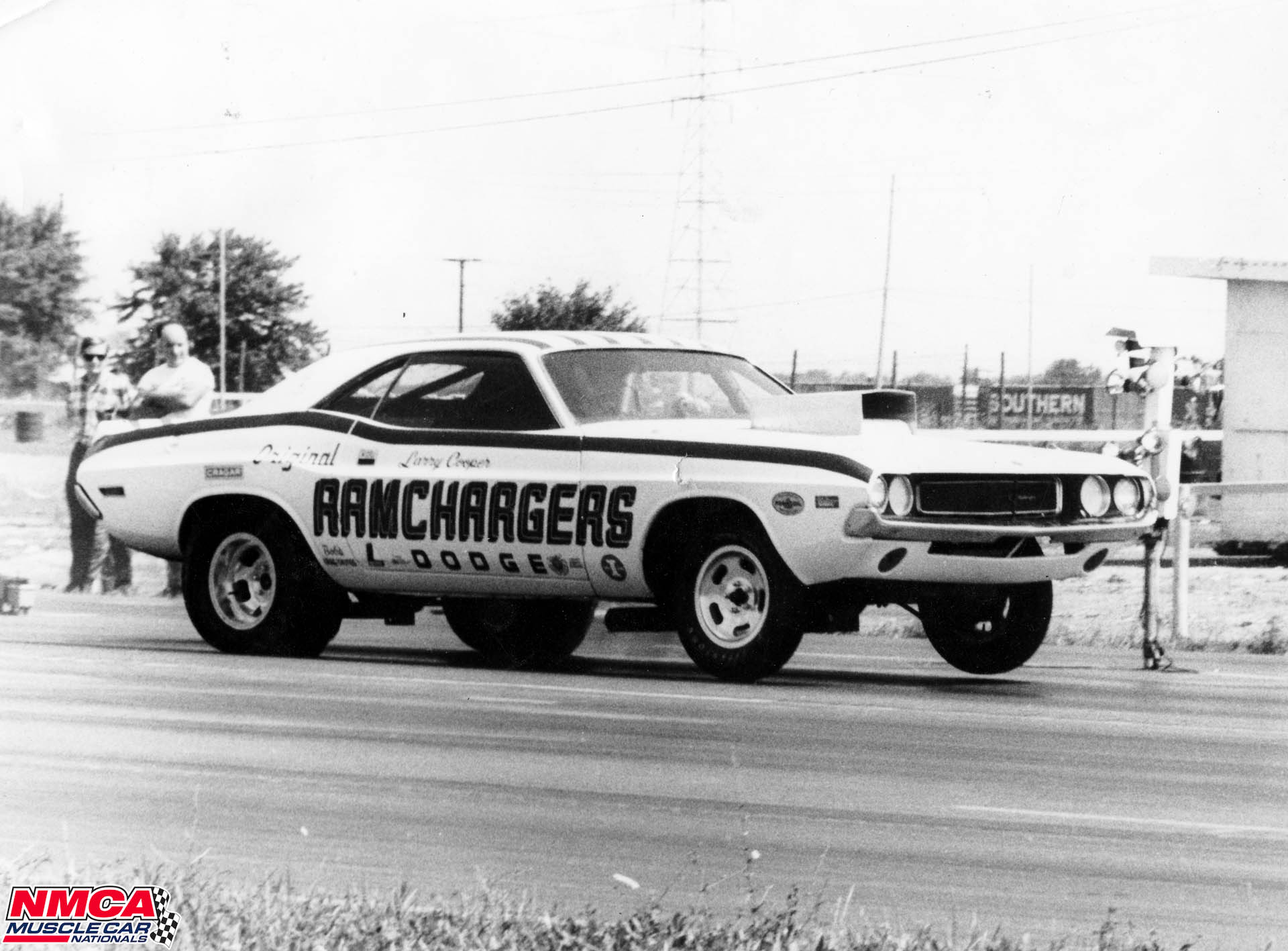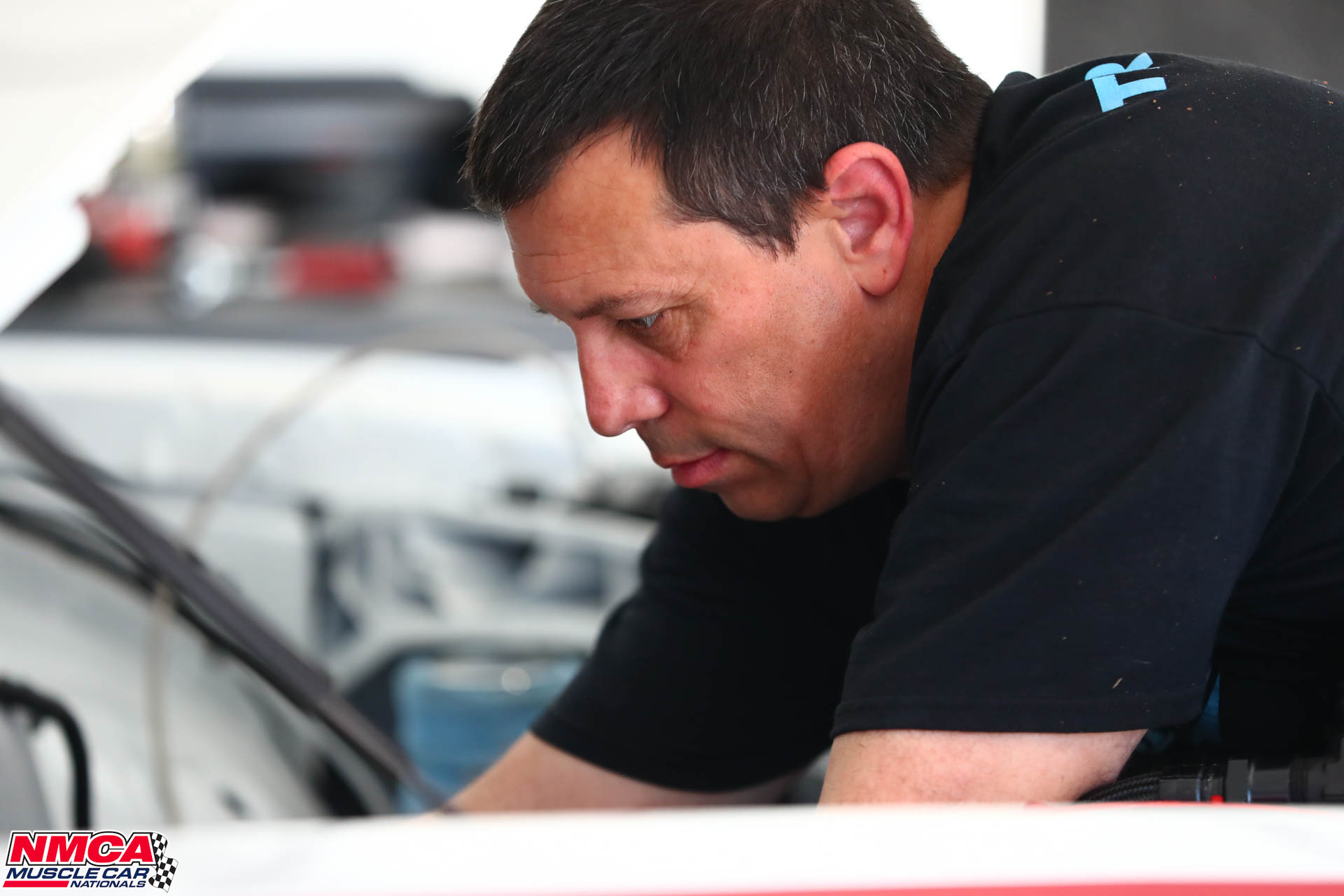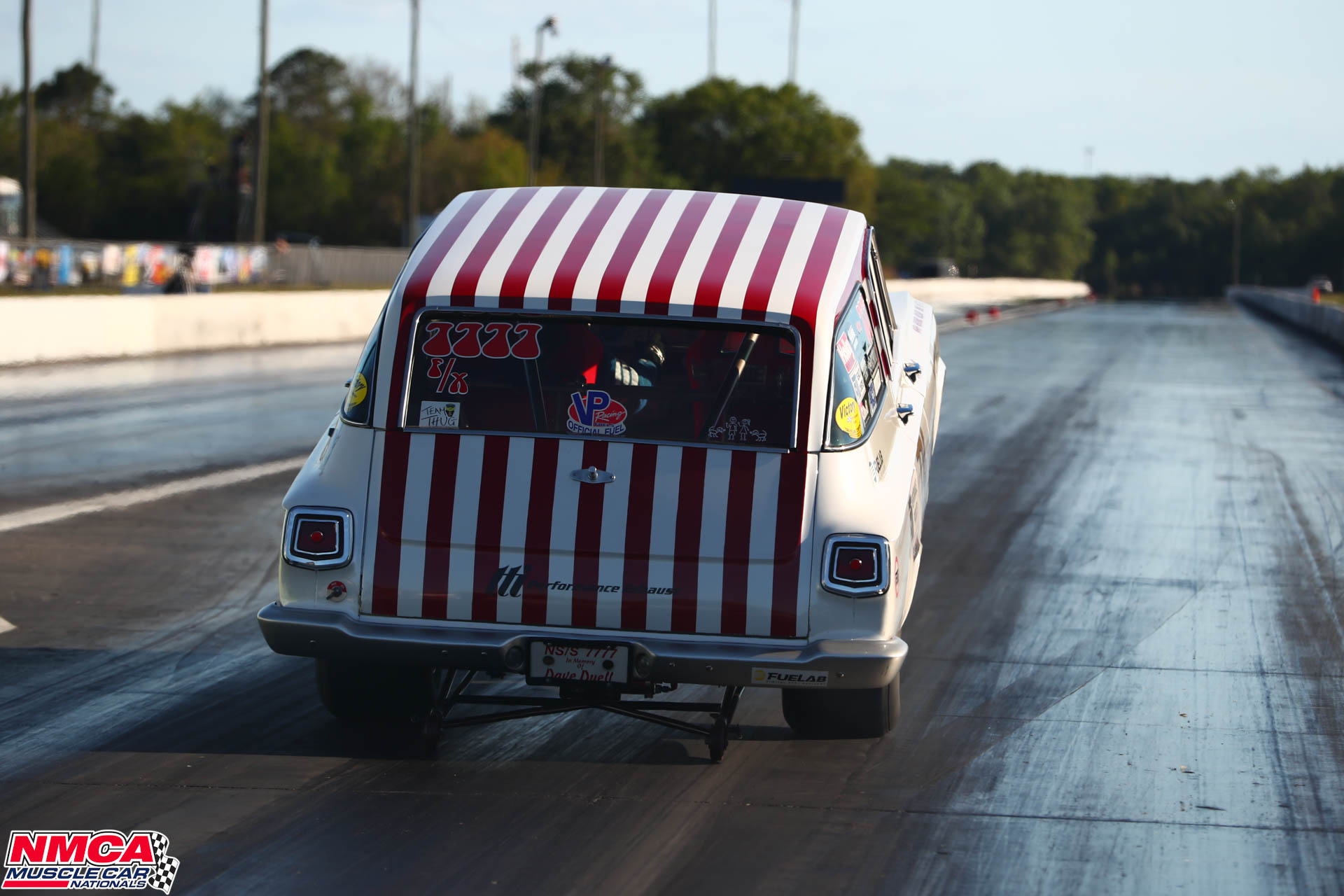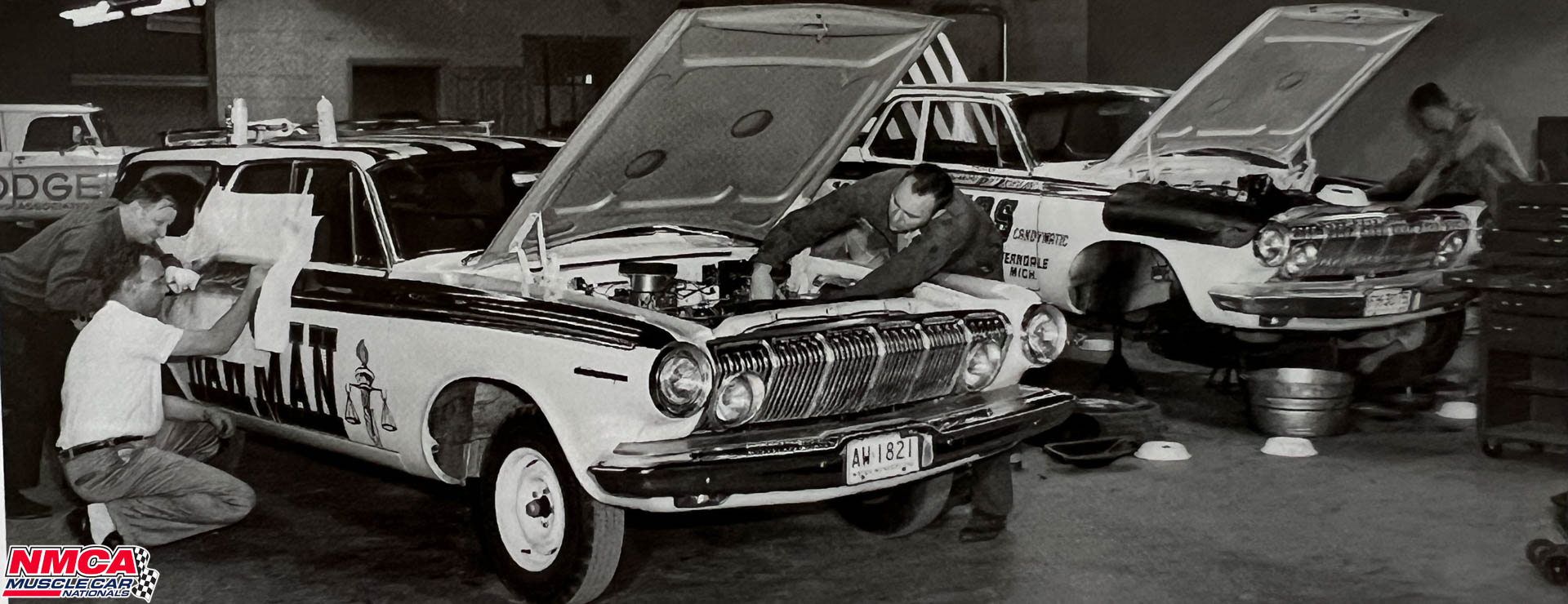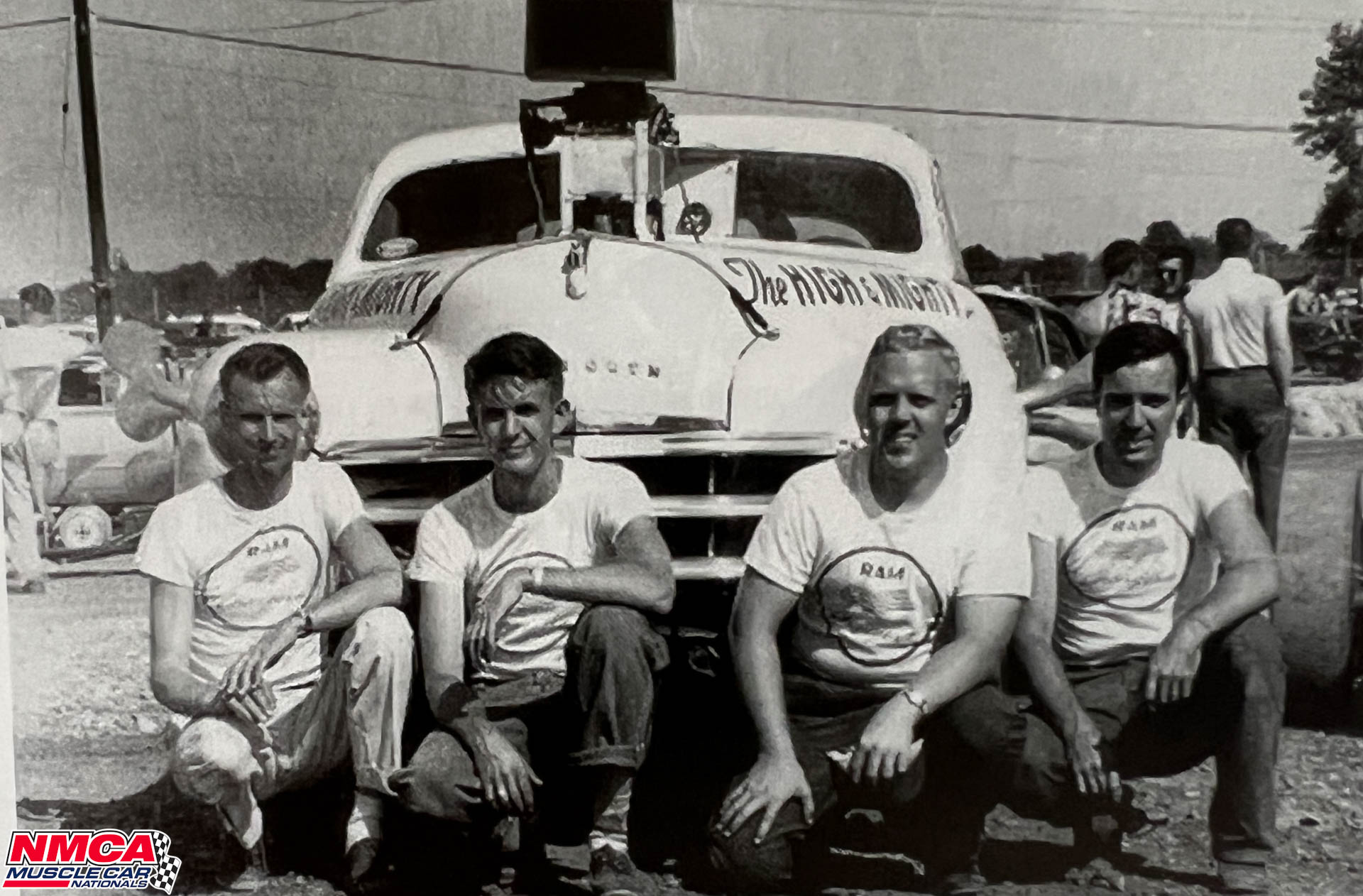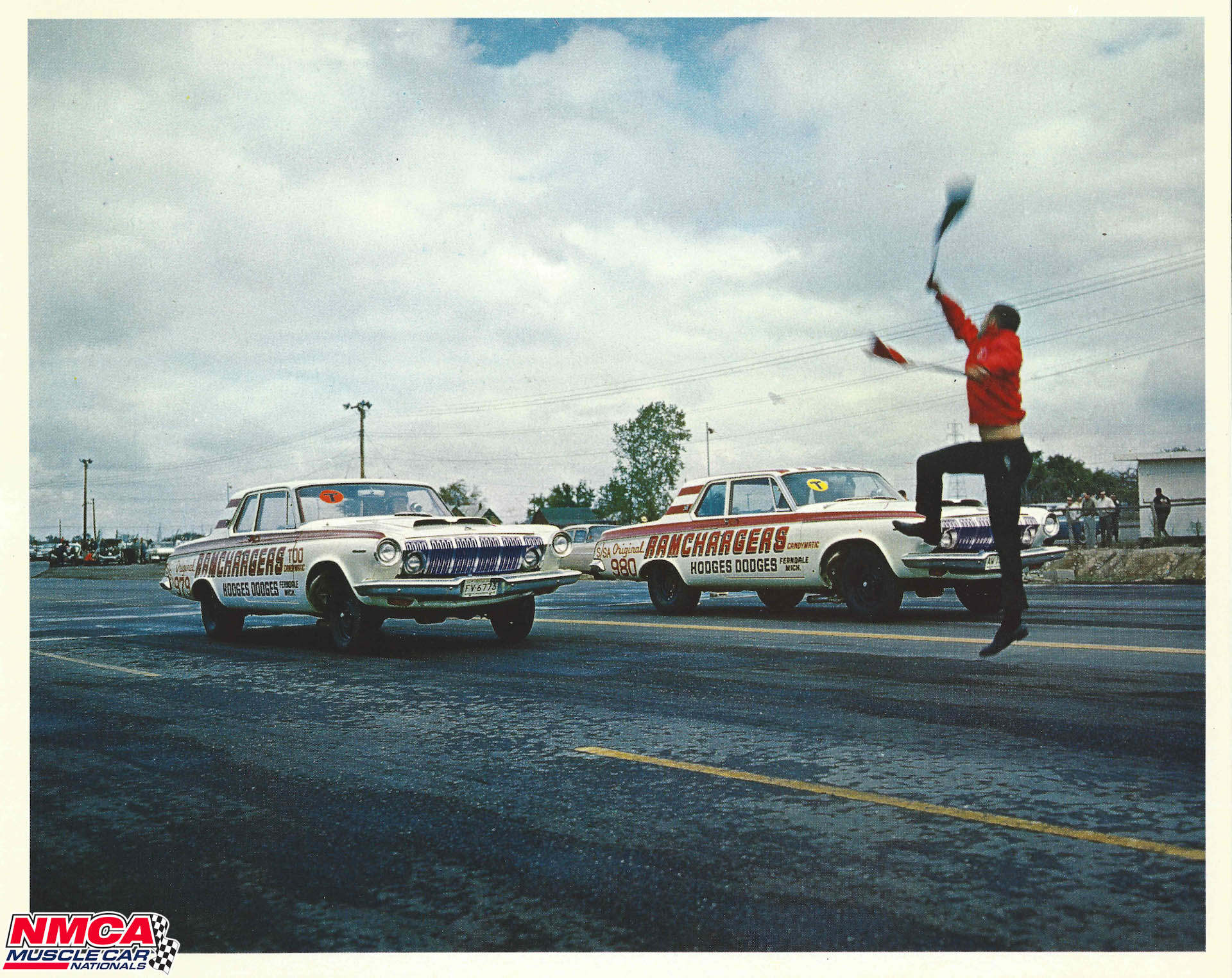THE RAMCHARGERS - DRAG RACING INNOVATORS 1960’s STYLE
By David Hakim
Drag Racing showcases never ending technology. Fuel management, engine design, timing control, suspension tuning, chassis construction and even tire compounds have significantly advanced in the past 50 years. While many the aftermarket performance parts manufacturers played a key role in moving the needle for horsepower, it was racers that had to think out-of-the-box in modifying their cars for lower ETs and more speed.
Sharp racer minds have been around a long time. And once such group spent their days dressed in white and black skinny ties in dyno cells, drafting rooms, and endless catacombs of Chrysler’s Highland Park Engineering Facility located in Detroit. While this merry band of diehard enthusiasts came from different backgrounds, education levels, and skills, they all shared the same DNA and passion to push the envelope of engine and chassis development in their quest to shrink time and space.
Unique individuals in many ways, but as a group, they were a formidable force to be reckoned with. Known as ‘The Ramchargers,’ they began the terror on the drag strips starting in the late 1950s when drag racing was in its infancy and would go on to make the biggest impact on the sport when it came to racing production-based vehicles in the Stock and Super Stock classes that were popular among America’s youth in the early 1960s.
The Ramchargers formally began its racing operations in one-car garages of various team members in the Detroit suburbs starting in the late 1950s. Their first team car was a severely modified 1949 Plymouth business coupe, named "The High and Mighty." Under the hood was a modified 354 Cubic-Inch HEMI that featured a handmade tunnel ram intake (the first of its kind) with twin Carter AFB carburetors, tuned exhaust headers, and adjustable multi-link rear suspension.
Once completed, the team ran C/Altered and soon began setting national records. One such outing was the 1959 NHRA Nationals at Detroit Dragway were the team earned national recognition by smashing the existing C/A ET and speed records. Not only did the fans take notice, but the team realized this would be a great way for Chrysler to promote products.
By 1961, the team, led by Tom Hoover and Jim Thornton, first approached the Plymouth division to support their racing efforts, but were turned down as the brand’s marketing head told the diehard drag racers “we sell family sedans and are not interested in drag racing.’’ Undaunted, they approached Dodge and with the support of Frank Wiley, Director of Public Relations for Dodge and Dodge Truck.
Wiley understood the growing youth market that gravitated towards drag racing and basically asked Thornton and Hoover, “What is it you need?” In that moment relationship between Wiley worked his magic (and connections) and got the team a car and parts and by the 1961 NHRA Nationals, The Ramchargers built a 1961 Dodge Dart Hardtop with a 413 big block that featured various bits and pieces from the Chrysler 300K including the cylinder heads and intake manifold.
The Dart shocked all the notable drag racers and put them on the trailer. “Dyno” Don Nicholson, Mickey Thompson, Bill Jenkins, Dave Strickler, and others fell victim to the unassuming Dart with its weird styling that included fins. The 1961 NHRA Nationals would be a watershed event that put Dodge and the Ramchargers on the map when it came to the Super Stock classes.
When 1962 rolled around, the Ramchargers along with Chrysler product planners and engineers created a new weapon. The 413 Max Wedge was born, and it quickly made the Chevy 409 and Ford 406 racers think long and hard about how they’d compete. As both Ford and Chevy regrouped and developed bigger engines with hotter cams and increased compression, Chrysler bumped up the Max Wedge to 426 cubic inches for 1963 and continued to refine the package. They claimed more wins including both a class honors and eliminator overall wins.
If that wasn’t bad enough for the Chevy, Ford, Pontiac, and Mercury racers, 1964 would be another challenging year for anyone that lined up next to the red candy stripe Dodges of the Ramchargers.
Chrysler ‘dropped the big one’ with the introduction of the 426 Race HEMI and the new Dodge and Plymouth Drag ‘Package Cars’ for ‘Acceleration Time Trials.’ While Petty and other HEMI-powered NASCAR racers cleaned house at the ’64 Daytona 500, the Ramcharger swept numerous NHRA and AHRA events that year, much to dismay of the other manufacturers. By 1965, Chrysler further refined its HEMI Package Cars and got around NHRA’s new rules outlawing ‘exotic lightweight body panels’ for Stock/Super Stock classes.
In addition, the new FX classes arrived as the pre-runner to modern Funny Car. Here, the Ramchargers blazed a trail of terror from Cecil County to Bakersfield in the nitro inhaling, injected HEMI-powered Coronet. They applied their skills and knowledge by altering the wheelbase, moving rear suspension mounting points, and extracting more power form the HEMI. Each Ramchargers team member had a specific task in building, tuning, and serving the team cars in an old, closedown Pontiac dealer on Woodward Avenue in Detroit. As NHRA and AHRA changed the rules for Funny Cars, the Ramchargers stepped away from the stock-bodied cars and focused their energy on a Dart-bodied Funny Car and Front Engine Dragster.
By the late 1960s, many of the original Ramcharger team member eventually got moved around within Chrysler’s vast departments. Members like Tom Hoover, Godfather of the 426 HEMI, would have his thumbprint on many iconic cars that still race today. These include the 1968 Super Stock HEMI Barracuda and Dart, and the infamous Motown Missile Pro Stock. Another former member, Dick Maxwell, would take a key role in Product Planning and made sure Sox & Martin, Don Grotheer, on other factory backed Super Stock/Pro Stock racers were part of Chrysler’s innovated Super Car Clinic Dealership Programs that helped consumers tune and prepared their cars drag racing.
The Ramchargers were innovators, not just in the creation of tube frame Funny Car, high-stall torque convertors, or even the Top Fuel HEMI. These guys were also innovators in the marketing of performance and engineering excellence. During the 1970s and ‘80s, the Ramchargers name lived on as a chain of speed shops in the Detroit area.
Today, those speed shops are long gone, but the iconic Ramchargers red candy stripes lives on many Mopars that carry the retro theme. One notable is AJ Berge’s super-fast 2021 Challenger Drag Pak that he drove to victory in the Holley EFI Factory Super Cars class at our Muscle Car Mayhem race at Orlando Speed World last month. It flies the iconic Ramchargers red candy stripes with pride, along with others that we’ve seen in various street and strip form. It’s the very spirit of those dedicated Chrysler engineers who changed drag racing forever with numerous innovations and cutting-edge technology some 60 years ago and hopefully it will never fade away.
By David Hakim
Drag Racing showcases never ending technology. Fuel management, engine design, timing control, suspension tuning, chassis construction and even tire compounds have significantly advanced in the past 50 years. While many the aftermarket performance parts manufacturers played a key role in moving the needle for horsepower, it was racers that had to think out-of-the-box in modifying their cars for lower ETs and more speed.
Sharp racer minds have been around a long time. And once such group spent their days dressed in white and black skinny ties in dyno cells, drafting rooms, and endless catacombs of Chrysler’s Highland Park Engineering Facility located in Detroit. While this merry band of diehard enthusiasts came from different backgrounds, education levels, and skills, they all shared the same DNA and passion to push the envelope of engine and chassis development in their quest to shrink time and space.
Unique individuals in many ways, but as a group, they were a formidable force to be reckoned with. Known as ‘The Ramchargers,’ they began the terror on the drag strips starting in the late 1950s when drag racing was in its infancy and would go on to make the biggest impact on the sport when it came to racing production-based vehicles in the Stock and Super Stock classes that were popular among America’s youth in the early 1960s.
The Ramchargers formally began its racing operations in one-car garages of various team members in the Detroit suburbs starting in the late 1950s. Their first team car was a severely modified 1949 Plymouth business coupe, named "The High and Mighty." Under the hood was a modified 354 Cubic-Inch HEMI that featured a handmade tunnel ram intake (the first of its kind) with twin Carter AFB carburetors, tuned exhaust headers, and adjustable multi-link rear suspension.
Once completed, the team ran C/Altered and soon began setting national records. One such outing was the 1959 NHRA Nationals at Detroit Dragway were the team earned national recognition by smashing the existing C/A ET and speed records. Not only did the fans take notice, but the team realized this would be a great way for Chrysler to promote products.
By 1961, the team, led by Tom Hoover and Jim Thornton, first approached the Plymouth division to support their racing efforts, but were turned down as the brand’s marketing head told the diehard drag racers “we sell family sedans and are not interested in drag racing.’’ Undaunted, they approached Dodge and with the support of Frank Wiley, Director of Public Relations for Dodge and Dodge Truck.
Wiley understood the growing youth market that gravitated towards drag racing and basically asked Thornton and Hoover, “What is it you need?” In that moment relationship between Wiley worked his magic (and connections) and got the team a car and parts and by the 1961 NHRA Nationals, The Ramchargers built a 1961 Dodge Dart Hardtop with a 413 big block that featured various bits and pieces from the Chrysler 300K including the cylinder heads and intake manifold.
The Dart shocked all the notable drag racers and put them on the trailer. “Dyno” Don Nicholson, Mickey Thompson, Bill Jenkins, Dave Strickler, and others fell victim to the unassuming Dart with its weird styling that included fins. The 1961 NHRA Nationals would be a watershed event that put Dodge and the Ramchargers on the map when it came to the Super Stock classes.
When 1962 rolled around, the Ramchargers along with Chrysler product planners and engineers created a new weapon. The 413 Max Wedge was born, and it quickly made the Chevy 409 and Ford 406 racers think long and hard about how they’d compete. As both Ford and Chevy regrouped and developed bigger engines with hotter cams and increased compression, Chrysler bumped up the Max Wedge to 426 cubic inches for 1963 and continued to refine the package. They claimed more wins including both a class honors and eliminator overall wins.
If that wasn’t bad enough for the Chevy, Ford, Pontiac, and Mercury racers, 1964 would be another challenging year for anyone that lined up next to the red candy stripe Dodges of the Ramchargers.
Chrysler ‘dropped the big one’ with the introduction of the 426 Race HEMI and the new Dodge and Plymouth Drag ‘Package Cars’ for ‘Acceleration Time Trials.’ While Petty and other HEMI-powered NASCAR racers cleaned house at the ’64 Daytona 500, the Ramcharger swept numerous NHRA and AHRA events that year, much to dismay of the other manufacturers. By 1965, Chrysler further refined its HEMI Package Cars and got around NHRA’s new rules outlawing ‘exotic lightweight body panels’ for Stock/Super Stock classes.
In addition, the new FX classes arrived as the pre-runner to modern Funny Car. Here, the Ramchargers blazed a trail of terror from Cecil County to Bakersfield in the nitro inhaling, injected HEMI-powered Coronet. They applied their skills and knowledge by altering the wheelbase, moving rear suspension mounting points, and extracting more power form the HEMI. Each Ramchargers team member had a specific task in building, tuning, and serving the team cars in an old, closedown Pontiac dealer on Woodward Avenue in Detroit. As NHRA and AHRA changed the rules for Funny Cars, the Ramchargers stepped away from the stock-bodied cars and focused their energy on a Dart-bodied Funny Car and Front Engine Dragster.
By the late 1960s, many of the original Ramcharger team member eventually got moved around within Chrysler’s vast departments. Members like Tom Hoover, Godfather of the 426 HEMI, would have his thumbprint on many iconic cars that still race today. These include the 1968 Super Stock HEMI Barracuda and Dart, and the infamous Motown Missile Pro Stock. Another former member, Dick Maxwell, would take a key role in Product Planning and made sure Sox & Martin, Don Grotheer, on other factory backed Super Stock/Pro Stock racers were part of Chrysler’s innovated Super Car Clinic Dealership Programs that helped consumers tune and prepared their cars drag racing.
The Ramchargers were innovators, not just in the creation of tube frame Funny Car, high-stall torque convertors, or even the Top Fuel HEMI. These guys were also innovators in the marketing of performance and engineering excellence. During the 1970s and ‘80s, the Ramchargers name lived on as a chain of speed shops in the Detroit area.
Today, those speed shops are long gone, but the iconic Ramchargers red candy stripes lives on many Mopars that carry the retro theme. One notable is AJ Berge’s super-fast 2021 Challenger Drag Pak that he drove to victory in the Holley EFI Factory Super Cars class at our Muscle Car Mayhem race at Orlando Speed World last month. It flies the iconic Ramchargers red candy stripes with pride, along with others that we’ve seen in various street and strip form. It’s the very spirit of those dedicated Chrysler engineers who changed drag racing forever with numerous innovations and cutting-edge technology some 60 years ago and hopefully it will never fade away.



